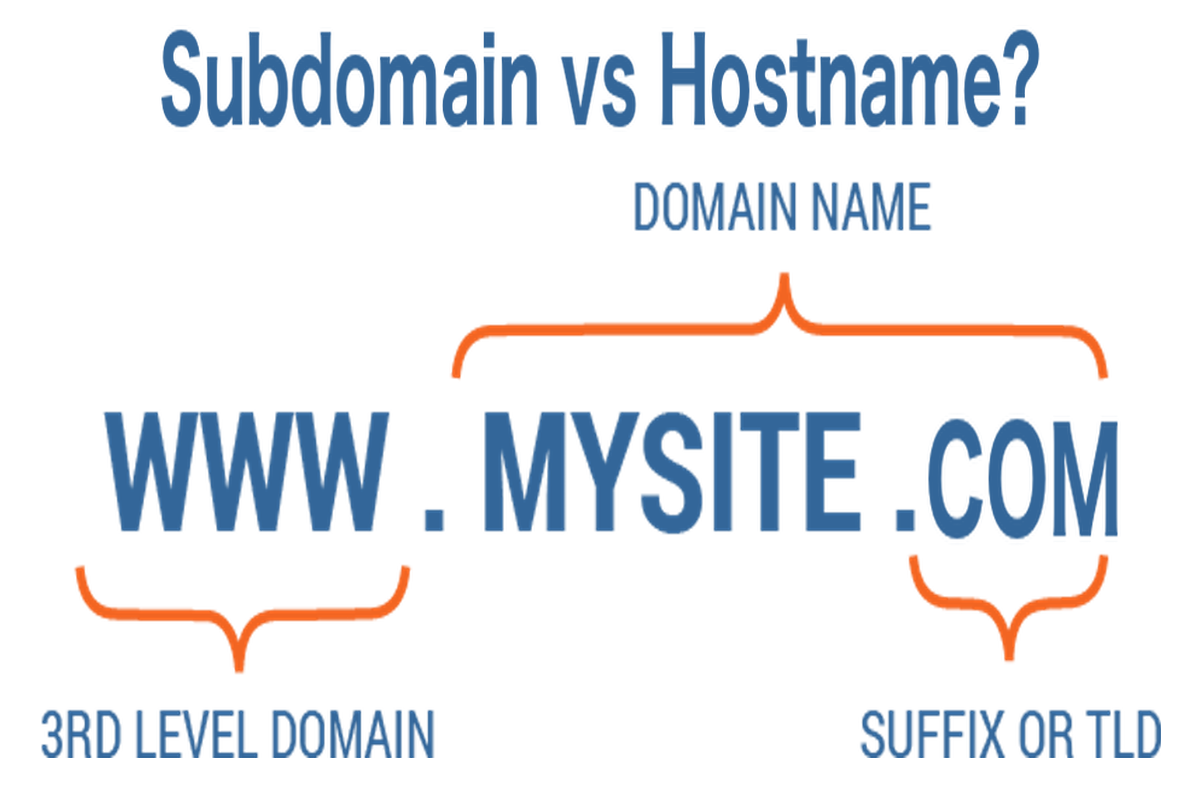Disclosure: This post contains affiliate links. I may receive compensation when you click on links to products in this post. For an explanation of my Advertising Policy, visit this page. Thanks for reading!
What’s the difference between a Subdomain vs Hostname in a website?
A hostname refers to the name of a website (otherwise known as the domain) on the Internet as it pertains to its URL, for example: www.example.com.
Whereas a subdomain is a domain that is a section of that larger hostname (domain), for example myblog.example.com the “myblog” being the subdomain.
Another more popular example would be if you had a free blog or website with WordPress.com. Your “Subdomain” would look like this: “mywebsite.wordpress.com.”.
Are hostname and domain name the same?
Hostnames and domain names are often used interchangeably, but they are actually two different things.
A hostname is the unique name that identifies a specific computer or device on a network.
For example, the hostname for the website “example.com” might be “www.example.com”.
A domain name is a wider identifier that can encompass multiple hostnames.
In the case of “example.com”, the domain name would simply be “example.com”.
So, while all domain names are hostnames, not all hostnames are domain names.
Make sense?
Well, it doesn’t really matter whether it makes sense or not. Just remember that these two terms are not interchangeable!
What is the difference between domain and subdomain?
When it comes to building a website, one of the first decisions you’ll need to make is choosing a domain name.
But what exactly is a domain? And what’s the difference between a domain and a subdomain?
A domain is simply the address people will use to access your website. It’s what comes after the “www” in a URL. For example, the domain for Google is “google.com.”
A subdomain is a section of your website with its own unique content. It’s like a mini-site within your main site.
Subdomains are often used to create separate sections for specific content or targeted audiences.
For example, you might have a blog on your website that lives on its own subdomain, such as “blog.example.com.”
Or you might have a section of your website devoted to selling products, which lives on its own subdomain, such as “store.example.com.”
In general, domains are easier to remember than subdomains, so it’s usually best to keep your domain name simple and straightforward.
However, there are some situations where using a subdomain can be beneficial.
If you have a lot of content on your website, using subdomains can help to keep things organized and make it easier for visitors to find the information they’re looking for.
And if you’re targeting a specific audience or marketing a specific product, using a subdomain can be a good way to create a separate space for that content.
Do subdomains have different IP addresses?
A subdomain is a second-level domain name that is part of a larger domain.
For example, blog.example.com would be a subdomain of example.com.
Subdomains are often used to segment different areas of a website, such as a blog, forum, or online store.
While most domain names have one IP address associated with them, it is possible for a single domain to have multiple IP addresses.
This means that each subdomain could potentially have its own unique IP address.
However, it is also possible for all subdomains to share the same IP address.
The decision of whether to give each subdomain its own IP address or not is up to the website owner and will depend on various factors, such as the size and structure of the website.
In any case, it is important to remember that subdomains are not separate domain names, and they do not necessarily have their own unique IP addresses.
What is the purpose of a subdomain?
A subdomain is an extension of a domain name that can be used to organize website content in a more specific way.
For example, if you have a website for your business, you might want to create a subdomain for your online store.
This would allow you to keep your main website separate from your online store, and it would make it easier for customers to find the products they’re looking for.
You can also use subdomains to target specific audiences.
For example, if you have a website for businesses, you might create a subdomain specifically for small businesses.
This would allow you to customize the content of your site to better meet the needs of your target audience.
Finally, the purpose of a subdomain is to help you better organize and manage your website content.
Can a hostname have multiple IP addresses?
The answer to this question is a bit complicated. Technically, a hostname can have multiple IP addresses.
However, in practice, this is rare.
Most hostnames are associated with a single IP address, and when multiple IP addresses are assigned to a hostname, they are typically used for different purposes.
For example, a website may have one IP address for the main site and another for the blog.
In general, then, it is best to think of a hostname as being associated with a single IP address.
Trying to assign multiple IP addresses to a single hostname can lead to confusion and may even cause problems with some applications.
What’s the difference between a Subdomain vs Hostname in a website? Summary.
When it comes to websites, there are a lot of terms that get thrown around. Hostname and subdomain are two of them.
But what exactly is the difference?
A hostname is simply the address of a website. For example, the hostname for this site would be www.example.com.
A subdomain, on the other hand, is a subdivision of a domain.
So, for example, if we had a blog on this site, we might give it the subdomain blog.example.com. As you can see, a hostname is just a specific type of subdomain.
The main difference is that a hostname is usually the primary address for a website, while a subdomain is used for more specific sections or pages of a site.
So, if you’re ever wondering whether you’re looking at a hostname or subdomain, just ask yourself if this is the main address for the site.
If it is, then it’s a hostname. If not, then it’s probably a subdomain.


